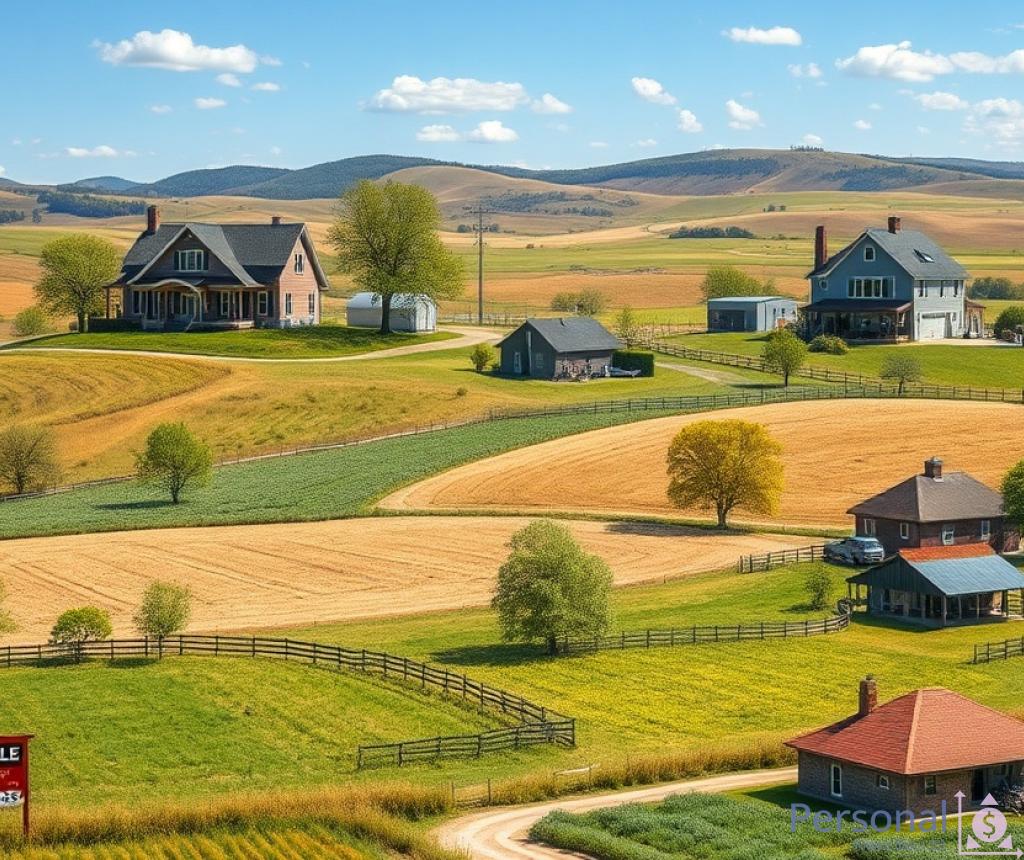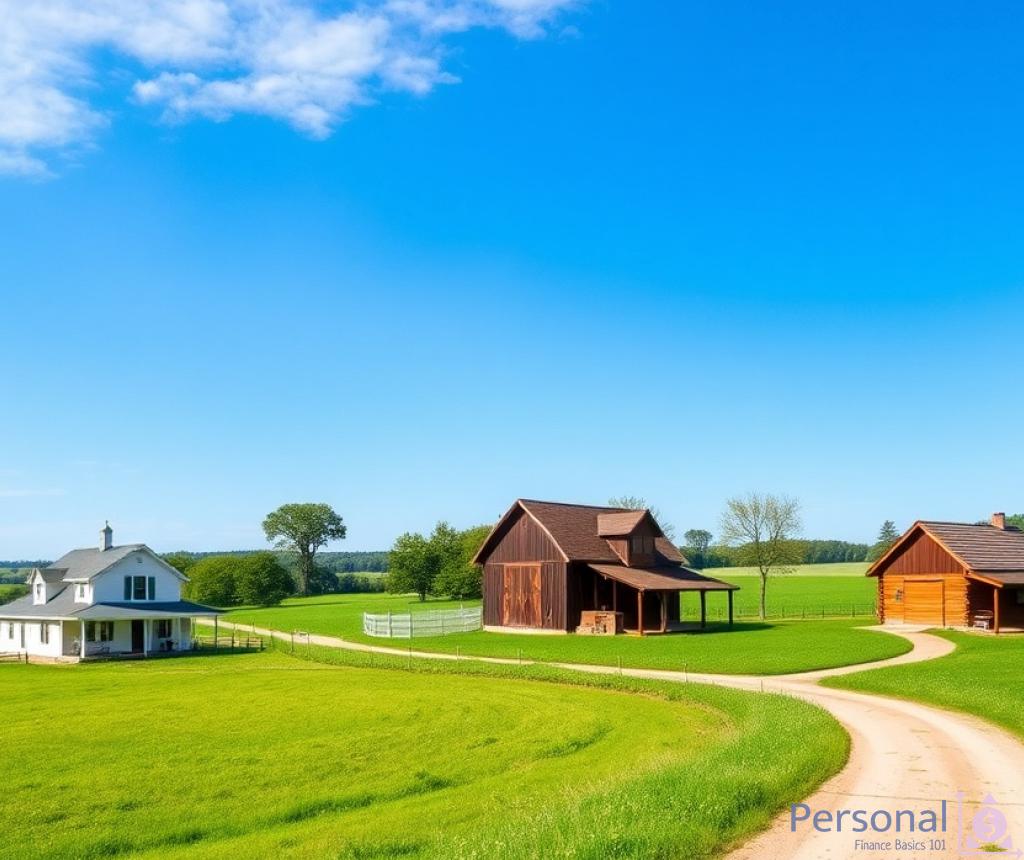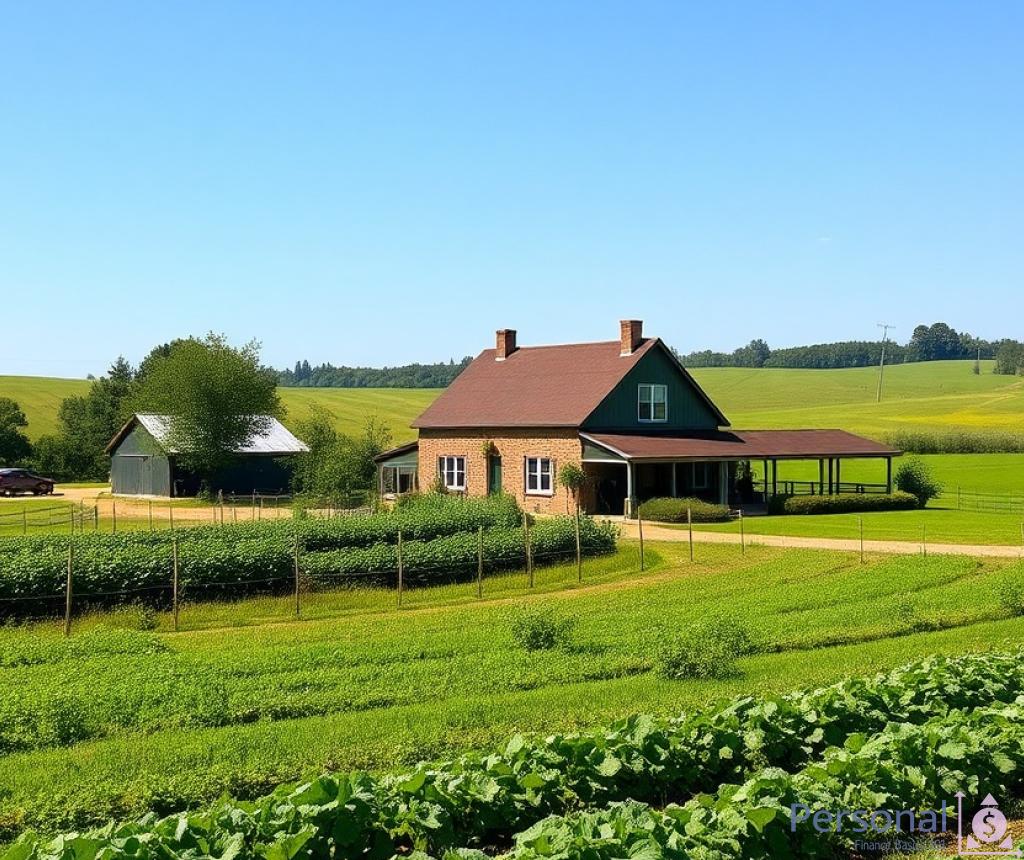Market Trends in Rural Real Estate

Shifting Demographics and Remote Work
The landscape of rural real estate is evolving, largely driven by changing demographics and the rise of remote work. As urban centers become increasingly congested and expensive, many individuals and families are seeking out the tranquility and space that rural living offers. This shift has been accelerated by the COVID-19 pandemic, which normalized remote work, allowing professionals to relocate without being tethered to city offices.
In this new environment, rural areas are experiencing a surge in demand for properties that provide larger living spaces, outdoor amenities, and a sense of community. The trend extends beyond just primary residences; vacation homes and investment properties in scenic rural locations are also gaining traction.
Market Dynamics and Pricing Trends
The dynamics of rural real estate markets have changed significantly in recent years. With increased demand comes rising prices, which can be both an opportunity and a challenge for buyers and investors. Understanding the pricing trends in rural areas is crucial for making informed decisions.
| Region | Average Price (2023) | Price Growth (YoY %) |
|---|---|---|
| Midwest | $250,000 | 10% |
| South | $300,000 | 12% |
| West | $400,000 | 15% |
| Northeast | $350,000 | 8% |
This table illustrates the average prices and year-over-year growth across various regions. It’s evident that rural real estate is becoming a competitive market, with certain areas experiencing rapid appreciation. Buyers should be aware of these trends to identify the best investment opportunities.
Challenges in the Rural Real Estate Market
Despite the promising growth in rural real estate, several challenges persist. Limited access to amenities, healthcare facilities, and high-speed internet can deter potential buyers. Additionally, the rural housing market often lacks the inventory to meet the rising demand, leading to bidding wars and inflated prices.
Moreover, prospective buyers must navigate the complexities of the rural property market, which can include issues related to zoning laws, land use regulations, and environmental considerations. Understanding these factors is essential for anyone looking to invest in rural real estate.
- Limited Inventory: The supply of homes in rural areas is often constrained, making it harder for buyers to find suitable options.
- Infrastructure Concerns: Many rural regions struggle with insufficient infrastructure, impacting quality of life and property values.
- Market Awareness: Buyers may lack knowledge about the unique aspects of rural real estate, necessitating expert guidance.
Financing Options for Country Properties

Investing in rural real estate presents a unique set of financing challenges and opportunities. As the allure of country living gains traction, potential buyers must navigate a landscape that differs significantly from urban property financing. Understanding the available financing options can empower buyers to make informed decisions and secure their dream country home.
Government-Backed Loans are a popular choice for those looking to purchase rural properties. Programs like the USDA Rural Development loan offer favorable terms, including low down payments and competitive interest rates, making it easier for applicants to secure financing. These loans are designed specifically for properties in designated rural areas, ensuring that buyers can access the funding needed to invest in their new lifestyle.
Another option to consider is conventional mortgages, which remain a common pathway for financing rural properties. However, it’s essential to note that lenders may have different criteria for rural homes compared to urban residences. Buyers should prepare for potential challenges, such as stricter appraisal processes due to the unique characteristics of rural properties. Consequently, it is advisable to work with lenders who have experience in rural real estate to facilitate a smoother transaction.
For those with substantial equity in existing properties, home equity loans or lines of credit can provide an excellent source of funds for purchasing country homes. This option allows homeowners to leverage their current equity, enabling them to tap into cash for down payments or renovations on their new rural property. However, buyers should be cautious, as utilizing this type of financing can impact their current financial standing and should be carefully evaluated.
In addition to traditional financing avenues, private financing is becoming increasingly popular among rural real estate buyers. This option can include loans from private investors or crowdfunding platforms, which often come with more flexible terms and quicker approval processes. This can be particularly advantageous in a competitive market where time is of the essence. Nevertheless, potential borrowers should exercise caution, as private loans may also carry higher interest rates and less regulation than conventional options.
Ultimately, understanding the various financing options available for rural properties is crucial for prospective buyers. By exploring government-backed loans, conventional mortgages, home equity options, and private financing, buyers can find the best solution to fit their needs. The key lies in thorough research and seeking guidance from professionals who specialize in rural real estate financing. This approach will not only enhance their purchasing power but also help them navigate the complexities of financing in this evolving market.
Lifestyle Benefits of Rural Living

The allure of rural living extends beyond the charm of open spaces and picturesque landscapes. As more individuals and families consider a shift from urban environments to the countryside, it becomes essential to explore the multifaceted lifestyle benefits that rural areas offer. Understanding these advantages can help potential buyers appreciate the unique qualities of country living, allowing them to make well-informed decisions about their future homes.
Connection with Nature and Community
One of the most compelling reasons people are drawn to rural areas is the profound connection with nature. The countryside provides ample opportunities for outdoor activities such as hiking, fishing, and gardening, which promote a healthy lifestyle and mental well-being. The fresh air, open skies, and scenic vistas contribute to a sense of tranquility that is often missing in urban settings.
Moreover, rural living fosters a sense of community that is hard to replicate in larger cities. Residents often enjoy closer relationships with their neighbors, which can lead to enhanced social support networks. Community events, farmers’ markets, and local festivals provide venues for residents to engage with one another, creating a strong sense of belonging.
Cost of Living and Space Considerations
Another significant lifestyle benefit of rural living is the lower cost of living compared to urban areas. Homebuyers can often find larger properties at more affordable prices, allowing for greater personal space and the opportunity to invest in amenities such as gardens, workshops, or even small farms. This financial advantage can lead to a more comfortable lifestyle, free from the stresses associated with high housing costs.
To give a clearer picture, the following table outlines the average property sizes and costs in urban versus rural settings:
| Location | Average Property Size (sq ft) | Average Cost ($) |
|---|---|---|
| Urban | 1,000 | 500,000 |
| Rural | 2,500 | 250,000 |
The contrast in property sizes and costs highlights the potential for a more expansive lifestyle that rural living can provide. Buyers can enjoy a larger home and land, paving the way for personal projects, outdoor activities, and even sustainable living practices.
Enhanced Quality of Life
Living in a rural area often translates to a slower pace of life, which can lead to reduced stress levels and improved mental health. With less noise, traffic, and pollution, residents can enjoy a more peaceful environment conducive to relaxation and reflection. This lifestyle shift can be particularly appealing for families seeking a nurturing environment for their children, as rural settings often promote outdoor play and connection with nature.
In summary, the lifestyle benefits of rural living are compelling and varied. From the profound connection to nature and community to the financial advantages of homeownership, the decision to embrace country living can lead to a more fulfilling and balanced life. As the appeal of rural real estate continues to grow, understanding these benefits is essential for those contemplating a move to the countryside.
Challenges in Rural Property Management
As more individuals are drawn to the serene landscapes and charm of rural living, the complexities of managing properties in these areas become increasingly apparent. While the allure of country life is undeniable, prospective property owners must be aware of the unique challenges that accompany rural property management. Understanding these obstacles can make the difference between a fulfilling rural experience and a frustrating endeavor.
Limited Access to Essential Services
One of the foremost challenges in rural property management is the limited access to essential services. Unlike their urban counterparts, rural areas may lack adequate infrastructure, including reliable healthcare facilities, grocery stores, and educational institutions. This can significantly impact the quality of life for residents and deter potential buyers. Moreover, the distance to these essential services can lead to increased travel times and associated costs. In some cases, property managers may find it necessary to coordinate transportation solutions for residents, further complicating management responsibilities.
Maintenance and Upkeep Complexities
Another critical challenge is the maintenance and upkeep of properties. Rural properties often come with larger plots of land, which require more extensive upkeep compared to urban properties. This includes landscaping, road maintenance, and potential agricultural considerations. Property owners may find themselves overwhelmed by the demands of maintaining both the interior and exterior of their homes. Furthermore, the availability of skilled labor for repairs and maintenance can be limited in rural areas, making it difficult to find reliable contractors or service providers. This situation can lead to delays in necessary repairs and increased costs, ultimately affecting the property’s value.
Additionally, rural properties may face unique environmental challenges, such as pest control, weather-related wear and tear, and landscape management. These factors necessitate a proactive approach to property management, where owners must stay informed about best practices and local regulations to ensure their investments remain in good condition.
Regulatory and Zoning Challenges
Rural property management also entails navigating a complex landscape of regulatory and zoning challenges. Each rural area may have its own set of land use regulations, zoning laws, and environmental protections that can impact what property owners can do with their land. For instance, restrictions on building permits, limitations on agricultural practices, or conservation regulations can create hurdles for property development or renovation projects. Understanding these regulations is essential for property managers to ensure compliance and avoid potential legal issues.
Moreover, rural communities may experience a slower pace of governmental processes, which can delay necessary approvals and permits. This can be particularly frustrating for property owners looking to make improvements or expansions on their land. In light of these challenges, seeking out local experts or legal counsel with experience in rural property management can provide invaluable guidance and support.
In summary, while rural living presents numerous opportunities for tranquility and space, it is crucial for potential property owners to recognize and prepare for the challenges inherent in rural property management. By understanding the limitations in access to services, the complexities of upkeep, and the regulatory landscape, individuals can make more informed decisions and enjoy the benefits of country living without the unexpected hurdles that may arise.
Impact of Technology on Rural Real Estate
The intersection of technology and rural real estate is reshaping the landscape of country living in remarkable ways. As digital tools become more integrated into our daily lives, they not only enhance the buying and selling processes but also redefine what rural living can offer. From virtual tours to advanced agricultural technologies, the influence of technology is felt across various aspects of rural real estate, providing opportunities that were once unimaginable.
Revolutionizing Property Search and Marketing is one of the most significant impacts of technology on rural real estate. Innovative online platforms and mobile applications have transformed the way buyers discover properties. High-quality virtual tours and drone photography allow potential buyers to explore homes from the comfort of their urban apartments, minimizing the need for extensive travel. This technological shift broadens the market reach for sellers as well, enabling them to attract a wider audience and showcase their properties in more appealing ways. The traditional real estate process is becoming more streamlined, leading to faster transactions and increased competition.
In addition to enhancing property search and marketing, technology plays a crucial role in smart home integration. Many buyers are now seeking homes that come equipped with smart devices, which can significantly improve energy efficiency and convenience. Features such as smart thermostats, security systems, and automated lighting not only appeal to modern buyers but also contribute to reduced operational costs over time. This trend is particularly important in rural areas where energy resources may be limited, allowing homeowners to maximize their investment and minimize their environmental footprint.
The emergence of agricultural technology is another vital aspect of technology’s impact on rural living. Farmers and landowners are increasingly utilizing precision agriculture tools, data analytics, and innovative crop management systems to enhance productivity and sustainability. These technologies enable rural property owners to make informed decisions about land use, leading to better yield and financial returns. As rural areas embrace these advancements, the combination of real estate and agriculture creates unique investment opportunities, appealing not only to homeowners but also to investors looking to capitalize on the growing demand for sustainable food production.
Ultimately, the impact of technology on rural real estate is multifaceted and profound. It is reshaping how properties are marketed and sold, enhancing the quality of life for residents through smart home features, and driving innovation in agricultural practices. As technology continues to evolve, rural living is poised to attract more individuals seeking the tranquility of country life while remaining connected to the digital world.
Disclaimer
This article has been created or edited with the support of artificial intelligence and is for informational purposes only. The information provided should not be considered investment advice. Please seek the support of a professional advisor before making any investment decisions.






